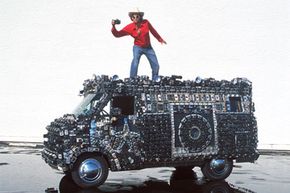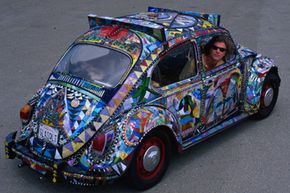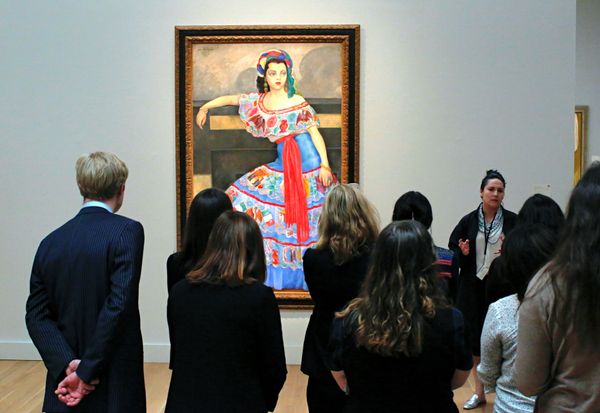Like any art, be it painting, sculpture, or something else altogether, trying to define what is or isn't an art car can be tricky. There must be a car involved, right? But what about trucks and motorcycles? Does it have to be drivable? Does it have to be pretty? Asking the question, "What is an art car?" will get you as many answers as asking, "What is art?" Yet, like any other form of art, it usually represents the individual and expresses something about them.
However, there are a few criteria that most people in the art car world can agree on. There is a degree of craft and dedication to the project involved; most art car artists would say that a car with a few painted handprints slapped on the hood is not a proper art car. Even then, there's a lot of leeway in the craft. As Harrod Blank, author of "Art Cars," once said of a Volkswagen Beetle covered in stained glass, "That takes a lot more artistic skill and decision making than a giant duck."
Advertisement
Being able to drive the vehicle is also important. If it doesn't run and drive, then it's just sculpture, not an art car. Often, the people who create the art car use it as a daily driver, taking it to work and on errands. They can also be second or third cars, but they're almost never tucked away in a garage, hidden from view or taken out only on special occasions.
It seems that there are a few types of art cars, though many blur the lines and the categories are mere guidelines and can include motorcycles and even bicycles:
- Paint Cars: are painted with words or patterns right on the surface of the vehicle
- Glue Cars: have items attached to the vehicle, usually from fender to fender
- Message Cars: have something to say, be it self-promotion or world peace
- Sculpted Cars: go far beyond glue cars and add towering sculptures and shapes to the body of the vehicle
- Interactive Cars: encourage people to play with the car, write on it, push buttons and more
People started creating art cars in the late 1970s and early 1980s, often without knowing that other people were starting on the same strange artistic journey. The first Houston Art Car Parade was held in 1988, and it is now the largest gathering of art cars in the world. In the mid-1990s, art cars began participating in the Burning Man festival in the Nevada desert. In the past decade, art car festivals have sprung up around the country, with various degrees of success.
But who would turn a perfectly good car into a shark? Or completely cover it with cameras? Or build a Gothic cathedral on top of a hearse? All of these cars already exist, and many more. Up next, let's take a look at what inspires art car artists.
Advertisement




